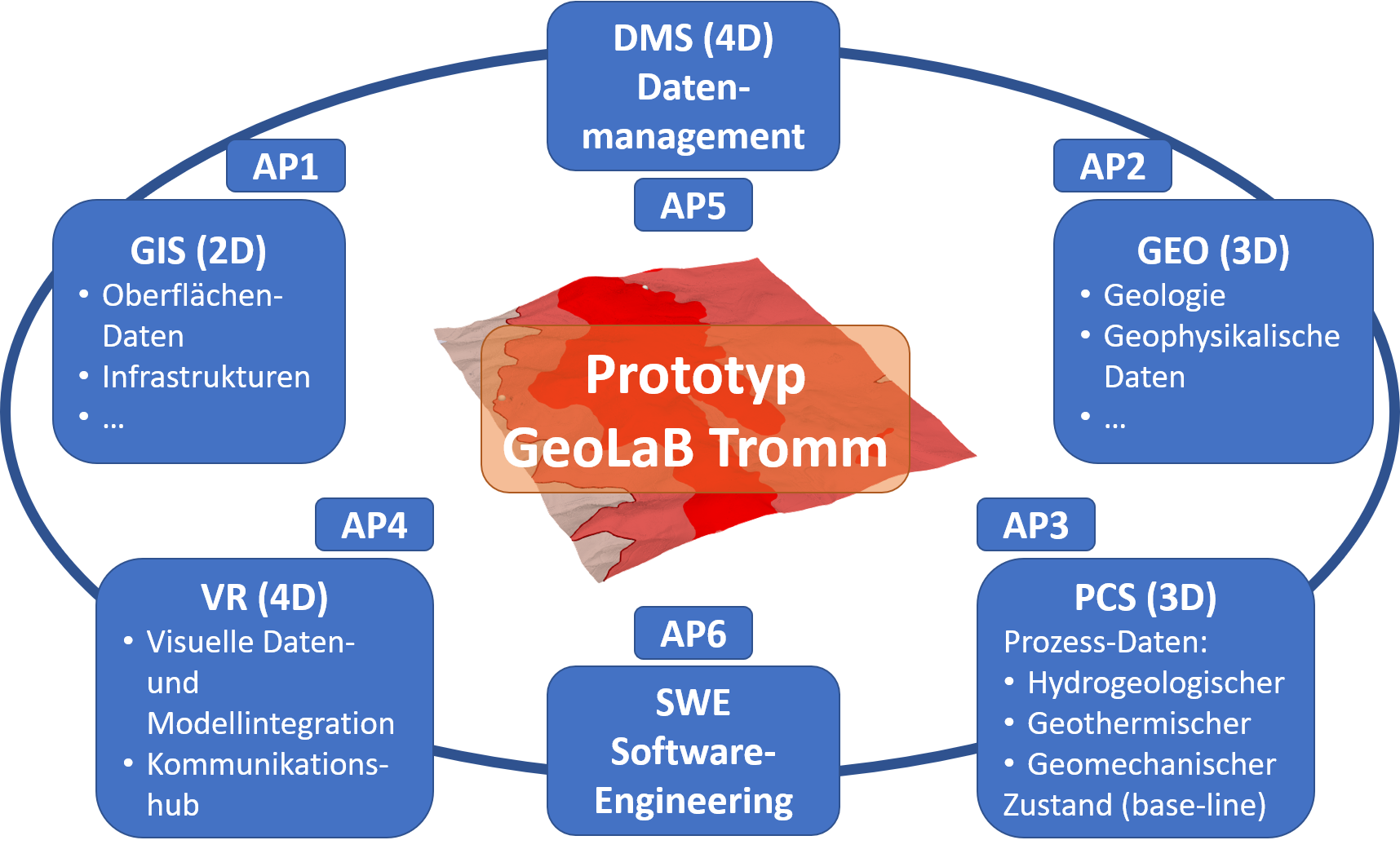GeoDT
Digital Twin for the GeoLaB site in the Odenwald
 Vision of the GeoLaB - In-situ Research Laboratory for Geothermal Systems in Crystalline Basement
Vision of the GeoLaB - In-situ Research Laboratory for Geothermal Systems in Crystalline Basement

Project title: GeoDT - Digital Twin GeoLaB (Digitaler Zwilling - Tiefengeothermie: Entwicklung eines Prototypen für den GeoLaB Standort im Odenwald - eine Großforschungsinfrastuktur der Helmholtz Gemeinschaft
The aim of the project is to develop and implement concepts for digital twins for deep geothermal systems. Digital twins (DT) are intended to unite the complete databases of a site (data integration). Initially, the site exploration data (e.g. geology, geophysics, hydrogeology, groundwater properties) will be integrated, and further data sets will be continuously integrated as the exploration progresses so that the digital twin always represents the current state of data and knowledge. Data management (DMS) will be carried out in a combination of geographical (GIS) and geological information systems. On the other hand, various simulation systems will be integrated into the digital twin. Geological modeling (GEO) and process simulation (PCS) will play an important role here. Geological modeling forms the structural-geological and geometric basis for data management and process simulation, which in turn are used, for example, for the interpretation of geophysical measurement data or the subsequent design of in-situ experiments and a geothermal deep system. The concept is embedded in virtual reality (xVR) methods in order to ensure visual, intuitive access to the complex geodata and process data as well as representation in a uniform geological context.
 Structure of the GeoDT project - Work packages and main objectives
Structure of the GeoDT project - Work packages and main objectives
The IT implementation is carried out using a range of software tools, most of which are developed by the project consortium as open source software projects. In a common development platform (GitLab), the interfaces are created and made available using modern software engineering methods (SWE). The methodology will be developed and demonstrated as an example for the Tromm (Odenwald), one of the possible locations for the GeoLaB underground research laboratory for deep geothermal energy (prototype). The special feature of GeoDT is that geoscientific and geotechnical aspects are linked in the digital twin. In addition to the digital image of the geological system (including hydrogeological, geothermal and geomechanical processes), methods of digital drilling technology are already being integrated in the course of exploratory drilling in cooperation with the industrial partners.
